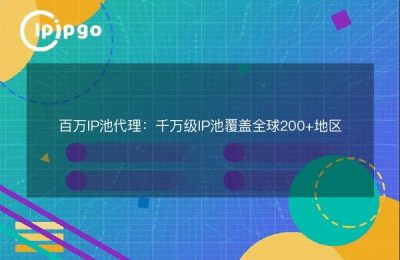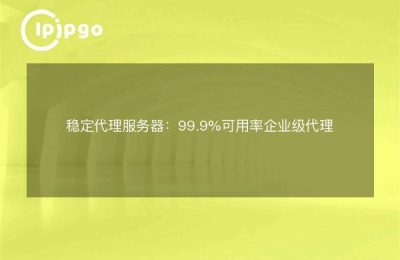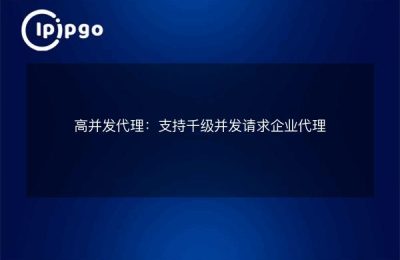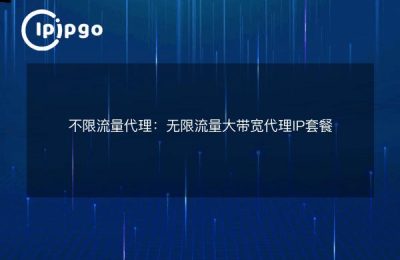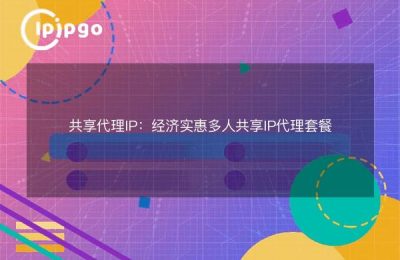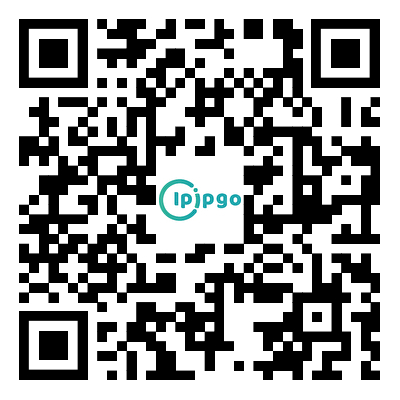
What is the High Stash Proxy IP? Why do I need to use it?
A high-stash proxy IP is like a "cloak of invisibility" that completely hides your real IP address. When you visit a website, the server can only see the proxy IP's place of origin, operator and other information, and this technology is especially suitable for scenarios where you need to avoid being recognized for your real identity. For example, if a web crawler uses an ordinary proxy during data collection, the real IP address may still be recognized by the target website through X-Forwarded-For and other request header information.
The differences between regular and high stash proxies can be compared in a table:
| comparison term | General Agent | High Stash Agents |
|---|---|---|
| Real IP Hiding | partial exposure | Completely hidden |
| request header information | Retention of the proxy logo | Simulate real users |
| Detection success rate | Approximately 601 TP3T intercepted | Below 5% Intercepted |
How to Choose a High Stash Agent That Really Works
The market is a mixed bag of common agency services, to avoid these three major traps:
Trap 1: Server room IPs masquerading as residential IPs - Many service providers use server room IPs to disguise high stash proxies, such IP segments have long been labeled by major platforms, and the survival time is usually no more than 2 hours. Real residential IP must come from the home broadband network, like ipipgo's 90 million + residential IP resources are from the global home users real devices.
Trap 2: Incomplete protocol support - Some proxies only support the HTTP protocol, and will fail in scenarios that require HTTPS or SOCKS5 protocol. It is recommended to choose a service provider that supports all protocols like ipipgo, which can be adapted to both browser access and program docking.
Pitfall 3: IP pools are slow to update - Quality Service Chamber real-time replenishment of fresh IP. test can be obtained continuously 10 IP, through the ipinfo.io query ASN information, if they are all from the same IDC server room should be vigilant.
Real-world configuration tips: Setting up a secure proxy in 3 steps
Step 1: Protocol Selection Prioritization
Browser access is prioritized with SOCKS5 protocol (the best encryption), and program docking is recommended with HTTP(s) protocol (the most compatible). ipipgo client provides a one-click switching function, which allows you to quickly test the effect of connecting with different protocols.
Step 2: IP Rotation Policy Settings
Dynamic IP is recommended to be set to change automatically in 15-30 minutes, and static IP is recommended to be bound to device characteristics (e.g. browser fingerprint). Be careful not to change it too often (more than 3 times per minute will be regarded as abnormal).
Step 3: Request Header Cleaning Setup
Enable "Real User Simulation" mode in the proxy software to automatically remove proxy logos such as X-Proxy-Client. ipipgo's intelligent routing system will automatically optimize the request header parameters to avoid non-conventional fields.
Advanced Application Scenarios for High Stash Agents
Scenario 1: Multi-account security management
Bind separate accounts with different residential IPs to avoid the risk of blocking due to IP association. For example, register account A with US IP and account B with Japanese IP, each IP comes from a real local home network.
Scenario 2: Data Validation Testing
Test page loading speed with residential IPs in different regions to get real regional access data. An e-commerce company called Southeast Asia IP through ipipgo and found that the page loading time of Malaysian users exceeded the standard, and optimized the CDN node in time.
Scenario 3: Service Stability Monitoring
Set multiple agent nodes to access the target service regularly and trigger the warning mechanism when more than 3 nodes alarm at the same time. This method can eliminate the interference of single point of failure and accurately determine the real state of the service.
Frequently Asked Questions QA
Q: Will high anonymous agents be recognized by 100%?
A: There is no technology that can guarantee absolute non-recognition, but the detection rate of high-quality residential IPs is lower than 5%. It is recommended to work with ipipgo's intelligent routing system to automatically switch to a new node when an IP triggers wind control.
Q: Why is the proxy slow sometimes?
A: You may encounter inter-operator line problem. Select "Smart Route" mode in ipipgo client, the system will automatically match the fastest line. If you are using static IP, we suggest you to bind the IP of local mainstream carriers.
Q: How do I test if proxy anonymity is up to par?
A: Visitsipleak.netand other testing sites, focusing on observation:
1. Whether a WebRTC leak is detected
2. Whether the DNS request goes through a proxy server or not
3. Whether the time zone language matches the IP location
When choosing a high stash proxy service, it is recommended to prioritize the trial of ipipgo's residential IP resources. Its global IP coverage capacity of 240+ countries/regions, together with intelligent routing technology, can effectively solve all kinds of network anonymity needs. With dynamic IP rotation and static IP binding functions, users can flexibly configure it according to business characteristics, enhancing work efficiency while safeguarding privacy and security.

